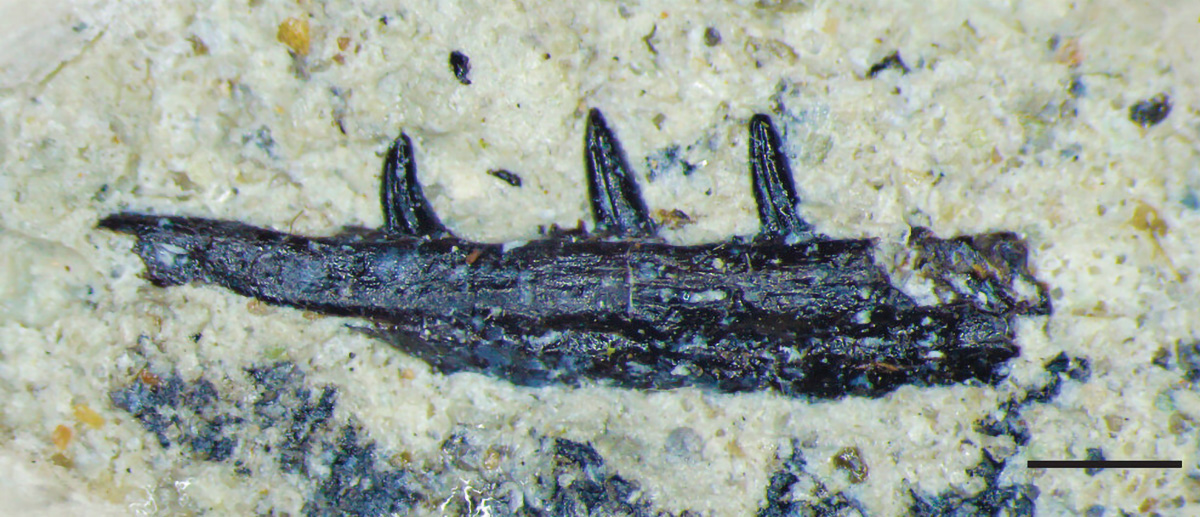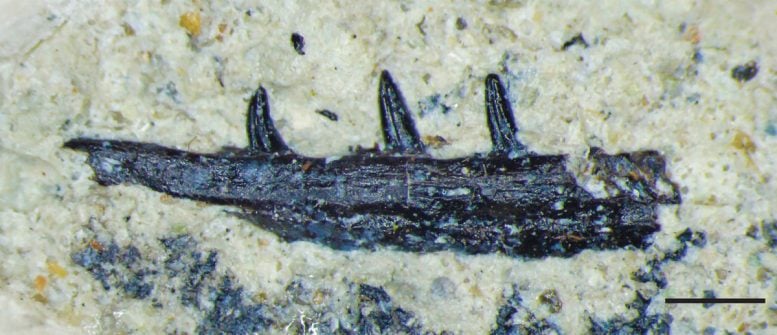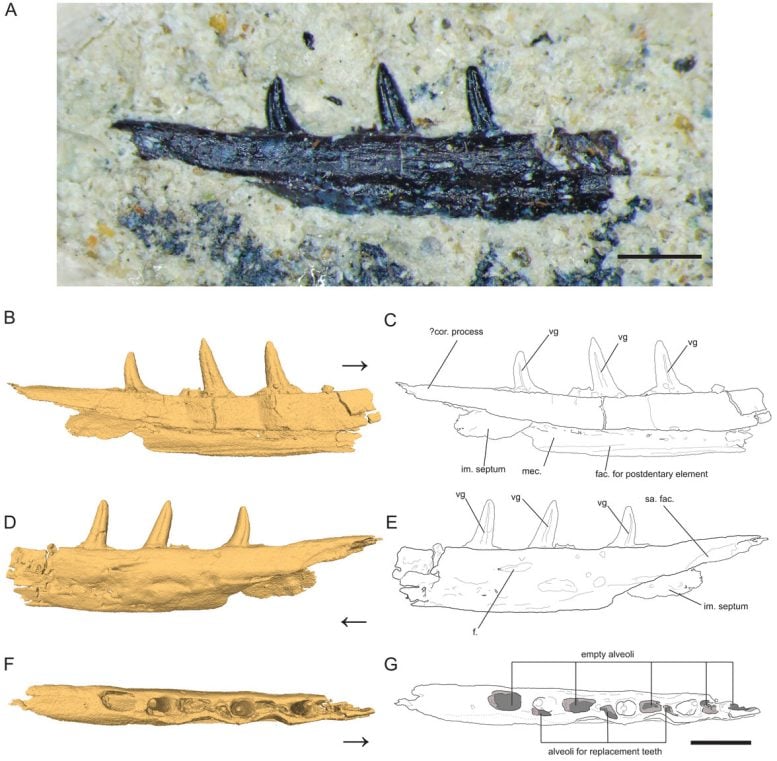

The venomous reptile Microzemiotes sonselaensis was discovered in Arizona’s Late Triassic, shedding light on reptile venom evolution and ancient ecosystems.
A newly discovered species of small, venomous reptile, Microzemiotes sonselaensis, has been identified in the Late Triassic Chinle Formation of northeastern Arizona. Recently published in PeerJ Life & Environment, the research provides fresh insights into the evolution of venomous feeding strategies in reptiles and enhances our understanding of ancient ecosystems in the southwestern United States.
The fossil, consisting of a partial left dentary with distinctively grooved teeth, is believed to represent a new species of reptile that used venom to subdue its prey. This discovery marks the third venomous reptile from the Late Triassic and the earliest known reptile with venom-conducting teeth preserved within a jaw. Prior to this, evidence for venom use in reptiles from the Late Triassic was limited to isolated teeth from the genus Uatchitodon.
Features of Microzemiotes sonselaensis
The newly described species, Microzemiotes sonselaensis, displays two deep grooves on each tooth extending the entire length of the tooth crown, which are similar to the venom-conducting grooves of modern venomous beaded lizards and rear-fanged snakes. These grooves likely facilitated venom delivery, indicating that the species relied on venom in its feeding strategy.
The teeth of Microzemiotes sonselaensis are approximately ten times smaller than those of Uatchitodon, suggesting that venom use may have evolved independently in multiple reptile groups of different body sizes. Microzemiotes sonselaensis was a very small reptile, probably no more than 30 cm in length.

Helen Burch, the study’s lead author and PhD student at Virginia Tech, notes that this discovery adds to the growing body of evidence for venom use among Mesozoic reptiles. “We know very little about the origins of reptile venom systems outside of living snakes and lizards, so Microzemiotes sonselaensis is a very exciting addition to a small handful of Mesozoic envenomaters,” said Burch.
The research also highlights the evolutionary diversity of venom delivery systems in reptiles, drawing comparisons to modern venomous species such as helodermatid lizards and some snakes. Although the exact phylogenetic placement of Microzemiotes sonselaensis remains uncertain, it falls outside of the clade Toxicofera, which includes all living venomous snakes and lizard groups including Gila monsters, monitor lizards, and iguanas, representing an independent evolution of a venom system.
This discovery not only expands the known diversity of Late Triassic reptiles but also contributes to the broader understanding of venom evolution. The implications extend beyond paleontology, offering insights into how ancient ecosystems functioned and how feeding methods have varied among reptiles.
Reference: “A small venomous reptile from the Late Triassic (Norian) of the southwestern United States” by Helen E. Burch, Hannah-Marie S. Eddins, Michelle R. Stocker, Ben T. Kligman, Adam D. Marsh, William G. Parker and Sterling J. Nesbitt, PeerJ Life & Environment.
DOI: 10.7717/peerj.18279